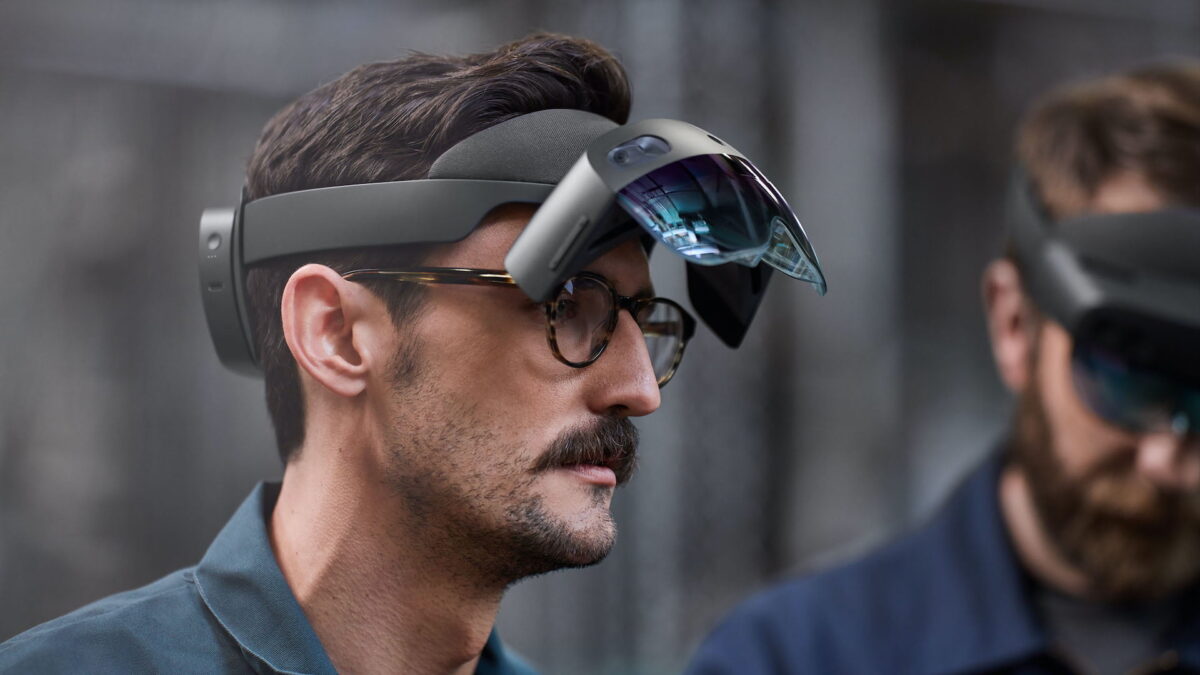U-turn on Hololens: Microsoft follows Meta and Apple - Report

What's next for Microsoft's mixed reality platform? A new report sheds light on the matter and describes a radical new direction.
Hololens 3 halted, internal disputes, and departing professionals: A report from Business Insider last week painted a chaotic picture of what's going on within Microsoft's mixed reality division.
Its head Alex Kipman dismissed the rumors on Twitter without denying that Hololens 3 had been discontinued. Now the website has published another report with new insider information about Microsoft's augmented reality future plans.
And Hololens 3 is dead after all
The source claims to know the company's product roadmap and calls Kipman's account of the situation "complete bullshit." Project Calypso, the codename under which Hololens 3 was being developed, has definitely been stopped, he says.
"All of the people who were working on it have been distributed to other programs or have left the company," the source said. Microsoft could take Hololens 2 and release a new version with minor improvements, but that would no longer be Calypso.
The AR glasses should have been a standalone Windows-based device like its two predecessors, but more robust, with longer battery life and with the ability to be worn outdoors.
Project Bondi: AR glasses for consumers
Microsoft had discontinued Project Calypso in order to devote the freed-up resources to other projects, including Project Bondi, which it was pushing with Samsung. That device is planned as "a set of displays in a headset" that uses a Samsung smartphone as a feed, he said. Apple's VR glasses are said to work on a similar principle.
That sounds like Microsoft and Samsung are developing video AR glasses. Besides Apple, Meta with Cambria (info) and Google with Project Iris are also working on a device of this type.
If the rumors are true, then almost all major tech companies are now relying on this design principle, which has major technical advantages over AR glasses with transparent optics like Hololens 1 and 2, Magic Leap 1 and 2, and Nreal Light. Video AR glasses are also easier and cheaper to manufacture since the display technology is based on proven VR glasses technology. The biggest drawback is the clunky form factor.
The Business Insider report says Microsoft's move would reduce the cost and complexity of the technology. That's a strong indication that the company is betting on video AR instead of transparent AR optics. With a lower price tag, Microsoft could once again target end-users. The report confirms this.
Farewell to Windows Mixed Reality?
Microsoft is also said to be working on another headset that relies on cloud streaming. Google's video AR glasses will reportedly also benefit from a cloud solution and thus counteract problems such as a lack of computing power and overheating.
It is obvious that Microsoft is experimenting in this direction, as the group is well positioned in the cloud streaming market with Azure. However, the project is still in its infancy, he said. "That device is in early planning and may still change significantly," the source tells Business Insider.
With the demise of Hololens 3, Microsoft has moved away from its own Windows-based mixed reality operating system, which formed the basis of Hololens 1 and 2, the source says.
Project Bondi, developed with Samsung, will likely rely on Android, while it is still unclear which operating system will be used for the more distant cloud-streaming headset. However, it will likely be necessary for HoloLens developers to rewrite some or all of their software from scratch, it said. Microsoft spokesman Frank Shaw would not comment on the rumors.
Microsoft's big AR shift
The report speaks of a deep technical realignment of Microsoft's mixed reality strategy, which is an apt description if rumors of a move away from Windows and transparent AR optics prove true.
Microsoft would thus make a radical U-turn away from Hololens 1 and 2, whose development started almost ten years ago. According to the report, the first AR glasses Microsoft developed under the codename "Fortaleza" reportedly had a puck-shaped feed, like Magic Leap's device. That version had been abandoned in favor of an integrated solution. The first Hololens emerged from this project, called "Baraboo".
The direct successor to Hololens 1 was scrapped because Kipman felt the improvements were too minor and did not see any direct competition. Hololens 2 evolved from a later project, codenamed Sydney.
The military version of the Hololens (official name: IVAS), on the other hand, is said to be in development under the codename Delaware and, unlike the Hololens 2, outsources the computing power and battery. According to the earlier report by Business Insider, the project is behind schedule and is facing quality issues. The Pentagon itself recently described the AR glasses as unfit for military use. The report doesn't say which direction this device is headed in light of Microsoft's radical realignment.
Read more about Microsoft:
- Activision Blizzard: Meta let Microsoft ahead – is Ubisoft more attractive?
- Microsoft: Hololens optics chief moves to Google for new AR hardware
- Microsoft chief sees Metaverse as "next wave of the Internet"
Note: Links to online stores in articles can be so-called affiliate links. If you buy through this link, MIXED receives a commission from the provider. For you the price does not change.